The Trossachs is an area steeped in history, famous historical events and individuals. The Clans of the Trossachs and Loch Lomond have played an important role in the history of the area and in fact still do today. If you are researching your clan history and your origins lie in the Trossachs or Loch Lomond then we have listed some basic information about the important clans of the area. A clan means “descendants” or “family” and has been loosely based on a geographical area where a particular Clan Chief’s family was the most dominant in that area. Many people took the clan chiefs name as their own to gain protection and sustenance from the chief and would rally to the call for the taking up of arms against other clans in return. Likewise many family names are associated with a particular clan for the very same reason. We have listed under each clan name other names that can associated with a particular clan. Many historic events and battles have seen the clans divided and often on opposing sides, either against the government of the day or themselves. Some excellent films have been made over the years, some in The Trossachs, such as Rob Roy (1953 and 1995) and Braveheart (1995) which showed the infighting that took place for the gaining of land or power or both. This infighting often suited the government as it made the control of the Highlands easier to manage and dispense the rule of law.
The Clans of the Trossachs and Loch Lomond
Battles such as the Battle for Stirling Bridge (September 11th, 1297) Bannockburn (23 June, 1314), The Battle of Glen Fruin (February 7, 1603) along with outlaws such as Rob Roy MacGregor have added to the colourful history of the Trossachs and its clans.
Another historical figure from this area is George Buchanan who was born in Killearn around 1506, he is perhaps most famous as the tutor to Mary Queen of Scots and her son James VI.
Ross Priory near Gartocharn, Inchallioch Island on Loch Lomond and Buchanan Castle ruins are historic places to visit and have various ties to the Clans of The Trossachs through the ages. The current site of Buchanan Castle near Drymen has no ties to Clan Buchanan but in fact is the seat of the Duke of Montrose, which is a Graham Clan title. Nowadays, Clan meetings through Highland Games and Shows are events that take place throughout the Trossachs and Loch Lomond area and beyond and are great days out, and also a chance to see a great variety of Tartans and Highland Dress.
Below are some of the Clans which have been associated with The Trossachs and Loch Lomond area
The Buchanan Family Clan
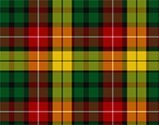 It is said to come from a grant given by King Malcolm II to Anselan O Kyan, who was thought to be an Irish prince. Anselan O Kyan came to the city of Argyll after fleeing from the Danes in 1016.The name Buchanan comes from the Gaelic term “Buth Chanain” which means House of the Canon. These Buchanan’s may have connections with the Celtic Church. Throughout seven centuries the Buchanan’s kept their land. It wasn’t until 1682 that their estate had to be sold in order to pay back debt. Learn More
It is said to come from a grant given by King Malcolm II to Anselan O Kyan, who was thought to be an Irish prince. Anselan O Kyan came to the city of Argyll after fleeing from the Danes in 1016.The name Buchanan comes from the Gaelic term “Buth Chanain” which means House of the Canon. These Buchanan’s may have connections with the Celtic Church. Throughout seven centuries the Buchanan’s kept their land. It wasn’t until 1682 that their estate had to be sold in order to pay back debt. Learn More
The Colquhoun Family Clan
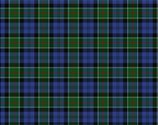 Malcolm, Earl of Lennox granted the lands of Colquhoun to Humphrey of Kilpatrick during the time of Alexander II. These lands are located in the county of Dunbarton. The old Earls of Lennox continued to possess Luss until, Sir Robert Kilpatrick of Colquhoun, wed the only daughter and child of the laird of Luss. Thus, their leader has since been referred to as Chief of Colquhoun and of Luss. In 1602 the Colquhouns battled the MacGregors in Glenfruin. The Colquhouns had 500 men, 300 of them on horseback. The MacGregors came with only 400 men. Learn More
Malcolm, Earl of Lennox granted the lands of Colquhoun to Humphrey of Kilpatrick during the time of Alexander II. These lands are located in the county of Dunbarton. The old Earls of Lennox continued to possess Luss until, Sir Robert Kilpatrick of Colquhoun, wed the only daughter and child of the laird of Luss. Thus, their leader has since been referred to as Chief of Colquhoun and of Luss. In 1602 the Colquhouns battled the MacGregors in Glenfruin. The Colquhouns had 500 men, 300 of them on horseback. The MacGregors came with only 400 men. Learn More
The Graham Family Clan
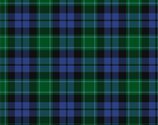 It has been said that the Roman Antonine Wall was crossed by a Graham and that wall is at times referred to as “Græme’s Dyke.” However, no proof has been given about that theory. Records do show the listing of the Graham name in William the Conqueror’s Doomsday book. Sir William of Graham was one of the knights who accompanied King David I as he came to Scotland to claim his throne. He was a witness to the building of the Abby of Holyrood in 1128. Learn More
It has been said that the Roman Antonine Wall was crossed by a Graham and that wall is at times referred to as “Græme’s Dyke.” However, no proof has been given about that theory. Records do show the listing of the Graham name in William the Conqueror’s Doomsday book. Sir William of Graham was one of the knights who accompanied King David I as he came to Scotland to claim his throne. He was a witness to the building of the Abby of Holyrood in 1128. Learn More
The MacArthur Family Clan
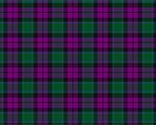 According to legend the MacArthurs are descended from King Arthur and the name was first referenced around the 6th century. Suggestions that the MacArthurs were formerly a branch of the Campbells, with whom the MacArthurs feuded with for much of the 13th century, are more plausible. During the Wars of Independence the MacArthurs of Loch Awe supported the cause of Robert the Bruce and fought at the crucial Battle of Bannockburn. From the King’s (and Scotland’s) success the clan prospered, gaining estates Learn More
According to legend the MacArthurs are descended from King Arthur and the name was first referenced around the 6th century. Suggestions that the MacArthurs were formerly a branch of the Campbells, with whom the MacArthurs feuded with for much of the 13th century, are more plausible. During the Wars of Independence the MacArthurs of Loch Awe supported the cause of Robert the Bruce and fought at the crucial Battle of Bannockburn. From the King’s (and Scotland’s) success the clan prospered, gaining estates Learn More
The MacFarlane Family Clan
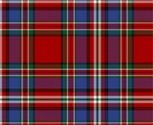 This clan traces its lineage back to Gilchrist son of Alwyn, Celtic Earl of Lennox. Gilchrist’s son Malduin fought with Robert the Bruce. It was Malduin’s son who was named Parlan which became MacPharlin and eventually MacFarlane. The 6th clan chief, Duncan gained the Arrochar land in 1395 from Earl of Lennox. Duncan also acquired other land around the area through marriages. When King James I killed Earl of Lennox the land was passed down to the Earldom of Sir John Stewart of Darnley and not the MacFarlane’s. Learn More
This clan traces its lineage back to Gilchrist son of Alwyn, Celtic Earl of Lennox. Gilchrist’s son Malduin fought with Robert the Bruce. It was Malduin’s son who was named Parlan which became MacPharlin and eventually MacFarlane. The 6th clan chief, Duncan gained the Arrochar land in 1395 from Earl of Lennox. Duncan also acquired other land around the area through marriages. When King James I killed Earl of Lennox the land was passed down to the Earldom of Sir John Stewart of Darnley and not the MacFarlane’s. Learn More
The MacGregor Family Clan
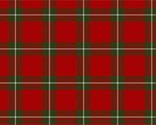 The history of the Macgregors or Gregors is one fraught with defiance and conflict, beset by events that have made the clan one of the most colourful in all of Scotland. The clan motto of ‘my race is royal’ is a reference to claims of descent from Giogar, son of the first king of Dalriada. While these claims have proved difficult to substantiate, what can be said for the MacGregors is that they held lands in Argyll and Perthshire and held a longstanding feud with the neighbouring family, the Campbells. Learn More
The history of the Macgregors or Gregors is one fraught with defiance and conflict, beset by events that have made the clan one of the most colourful in all of Scotland. The clan motto of ‘my race is royal’ is a reference to claims of descent from Giogar, son of the first king of Dalriada. While these claims have proved difficult to substantiate, what can be said for the MacGregors is that they held lands in Argyll and Perthshire and held a longstanding feud with the neighbouring family, the Campbells. Learn More
The MacLaren Family Clan
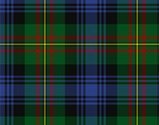 This clan is thought to come from the Argyll area and descended from Lorn, son of Erc in 503. But other recordings from the 12th century show the family line comes from Perthshire. Three clansmen claim the MacLaren name and they are: Maurice of Tyrie, Conan of Balquidder, and Lauring of Ardveche in Strathearn. The clan motto, “Creag on Tuirc” means ‘The Boar’s Rock.’ This rock can be found in Balquidder therefore, giving physical evidence that the clan didn’t come from Argyll but from the Balquidder area. Learn More
This clan is thought to come from the Argyll area and descended from Lorn, son of Erc in 503. But other recordings from the 12th century show the family line comes from Perthshire. Three clansmen claim the MacLaren name and they are: Maurice of Tyrie, Conan of Balquidder, and Lauring of Ardveche in Strathearn. The clan motto, “Creag on Tuirc” means ‘The Boar’s Rock.’ This rock can be found in Balquidder therefore, giving physical evidence that the clan didn’t come from Argyll but from the Balquidder area. Learn More
The MacNab Family Clan
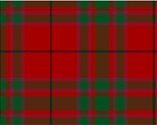 The territory of Clan MacNab lay historically between the south-western shores of Loch Tay and the village of Tyndrum. The clan’s name derived from the Gaelic Mac an Aba, meaning son of the Abbot. Its founding chiefs were based around Glen Dochart and descended from Kenneth McAlpine, first King of Scots. The first mention of MacNab in written documentation is found in 1124 during David I’s reign. During the Scottish Civil War, a protracted conflict which took place alongside the Wars of Independence, the MacNab clan upheld the claims. Learn More
The territory of Clan MacNab lay historically between the south-western shores of Loch Tay and the village of Tyndrum. The clan’s name derived from the Gaelic Mac an Aba, meaning son of the Abbot. Its founding chiefs were based around Glen Dochart and descended from Kenneth McAlpine, first King of Scots. The first mention of MacNab in written documentation is found in 1124 during David I’s reign. During the Scottish Civil War, a protracted conflict which took place alongside the Wars of Independence, the MacNab clan upheld the claims. Learn More
The MacNaughton / MacNachtan Family Clan
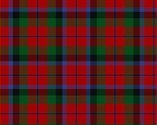 Can show links to Moray’s ancient Pictish rulers, descendants themselves from the Nachtan Mor clan which lived around the 10th century. Nachtan of Moray was awarded lands in either Strathay or Strathspey by Malcolm IV as part of a policy designed to pacify and develop Scotland’s northern, remote counties. It would be during the reign of Alexander III, in 1267, that the MacNachtan’s settled in the county of Argyll after their chief Gilchrist was tasked with with maintaining the King’s castle on the island of Fraoch Eilean. Learn More
Can show links to Moray’s ancient Pictish rulers, descendants themselves from the Nachtan Mor clan which lived around the 10th century. Nachtan of Moray was awarded lands in either Strathay or Strathspey by Malcolm IV as part of a policy designed to pacify and develop Scotland’s northern, remote counties. It would be during the reign of Alexander III, in 1267, that the MacNachtan’s settled in the county of Argyll after their chief Gilchrist was tasked with with maintaining the King’s castle on the island of Fraoch Eilean. Learn More
The Napier Family Clan
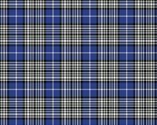 One story suggests the clan is derived from the ancient royal families of Scotland and Ireland. It is believed that the officer in charge of the linens, called the “naperer”, took the occupational name. Another tale tells the Napier name came when a young knight of Earl of Lennox illustrated himself at a battle during the reign of William the Lion. As the battle came to an end, the king honored the young night as having “nae peer.” The first time the Napier name appears in records was in 1280 when John De Napier is recorded as receiving lands in. Learn More
One story suggests the clan is derived from the ancient royal families of Scotland and Ireland. It is believed that the officer in charge of the linens, called the “naperer”, took the occupational name. Another tale tells the Napier name came when a young knight of Earl of Lennox illustrated himself at a battle during the reign of William the Lion. As the battle came to an end, the king honored the young night as having “nae peer.” The first time the Napier name appears in records was in 1280 when John De Napier is recorded as receiving lands in. Learn More
Clan Territories
The Loch Lomond & Trossachs National Park covers a huge area and within it there are many famous and infamous clans. Clans generally identify with geographical areas originally controlled by the Chiefs, sometimes with an ancestral castle and clan gatherings form a regular part of the social scene.
Historically, a clan was made up of everyone who lived on the chief’s territory, or on territory of those who owed allegiance to the said chief. Through time, with the constant changes of “clan boundaries”, migration or regime changes, clans would be made up of large numbers of members who were unrelated and who bore different surname. Often those living on a chief’s lands would over time adopt the clan surname.
A chief could add to his clan by adopting other families, and also had the legal right to outlaw anyone from his clan, including members of his own family. Today, anyone who has the chief’s surname is automatically considered to be a member of the chief’s clan. Also, anyone who offers allegiance to a chief becomes a member of the chief’s clan, unless the chief decides not to accept that person’s allegiance. The only rule is that it is up to the chief whom he may decide to accept as a member of his clan.
Payments of rents and from those living on clan estates and from families living elsewhere were channelled through tacksmen. These lesser gentry acted as estate managers, allocating the run-rig strips of land, lending seed-corn and tools and arranging droving of cattle to the Lowlands for sale, taking a minor share of the payments made to the clan nobility, the fine. They had the important military role of mobilising the Clan Host, both when required for warfare and more commonly as a large turn out of followers for weddings and funerals, and traditionally in August for hunts which included sports for the followers, the predecessors of the modern Highland Games.
Successive Scottish (and after 1707 the British) governments had portrayed the clans as bandits needing occasional military expeditions to keep them in check and extract taxes. As Highlanders became associated with Jacobitism and rebellion, the government made repeated efforts to curb the clans, culminating with brutal repression after the battle of Culloden. This followed in 1746 with the Act of Proscription, further measures making restrictions on their ability to bear arms, traditional dress, culture, and even music. The Heritable Jurisdictions Act removed the feudal authority the Clan Chieftains had once enjoyed.
With the failure of Jacobitism, the clan chiefs and gentry increasingly became landlords, losing the traditional obligations of clanship. They were incorporated into the British aristocracy, looking to the clan lands mainly to provide them with a suitable income. From around 1725, clansmen had been emigrating to North America looking to re-establish their lifestyle, or as victims of raids on the Hebrides looking for cheap labour. Increasing demand in Britain for cattle and sheep led to higher rents, with surplus clan population leaving in the mass migration later known as the Highland Clearances, finally undermining the traditional clan system.
Ever since the Victorians and no doubt also the romantic writings of Sir Walter Scott, tartans have been an important part of a Scottish clans. Almost all Scottish clans have more than one tartan attributed to their surname. Although there are no rules on who can or cannot wear a particular tartan, and it is possible for anyone to create a tartan and name it almost any name they wish, the only person with the authority to make a clan’s tartan “official” is the chief of that clan. In some cases, following such recognition from the clan chief, the clan tartan is recorded and registered by the Lord Lyon. Once approved by the Lord Lyon, after recommendation by the Advisory Committee on Tartan, the clan tartan is then recorded in the Lyon Court Books.
Clan Badges
Clan badges are another means of showing one’s allegiance to a Scottish clan. These badges, sometimes called plant badges, consist of a sprig of a particular plant. They are usually worn in a bonnet behind the Scottish crest badge; they can also be attached at the shoulder of a lady’s tartan sash, or be tied to a pole and used as a standard.
Clans which are connected historically, or that occupied lands in the same general area, may share the same clan badge. According to popular lore, clan badges were used by Scottish clans as a form of identification in battle. Much like today with regiments of the British Army having cap badges to identify each member of that regiment. Clan badges are commonly referred to as the original clan symbol however, it is claimed the heraldic flags of clan chiefs would have been the earliest means of identifying Scottish clans in battle or at large gatherings.
